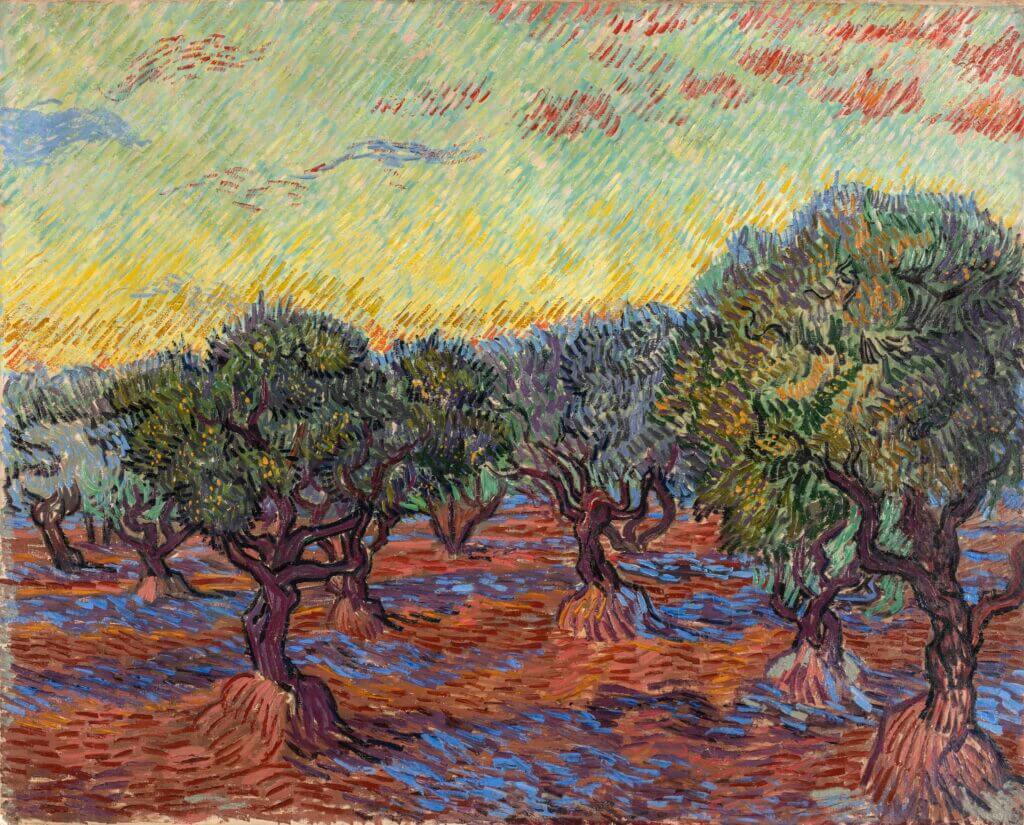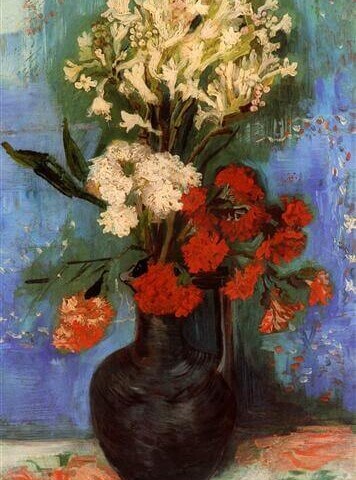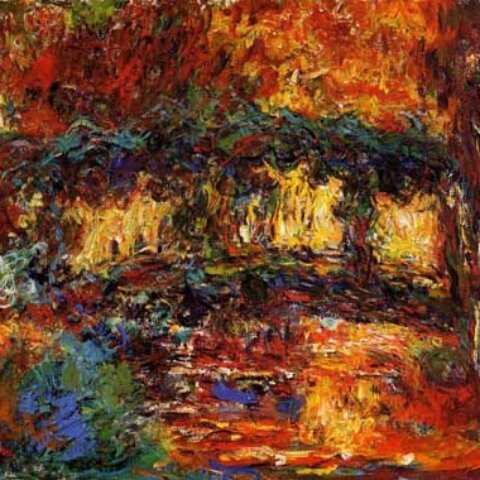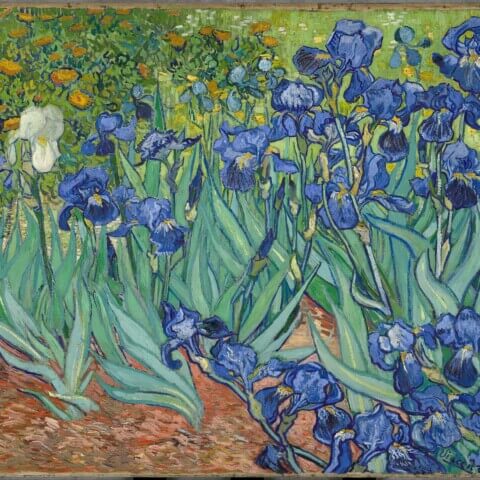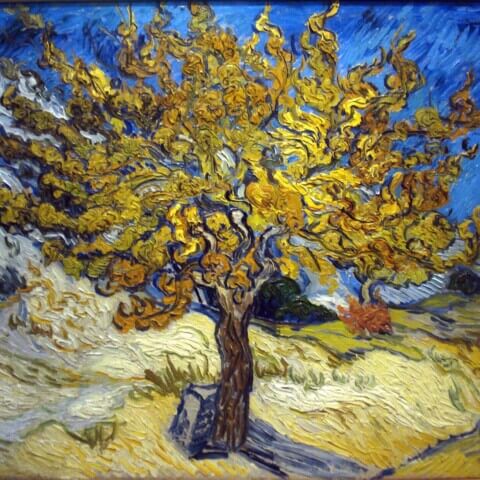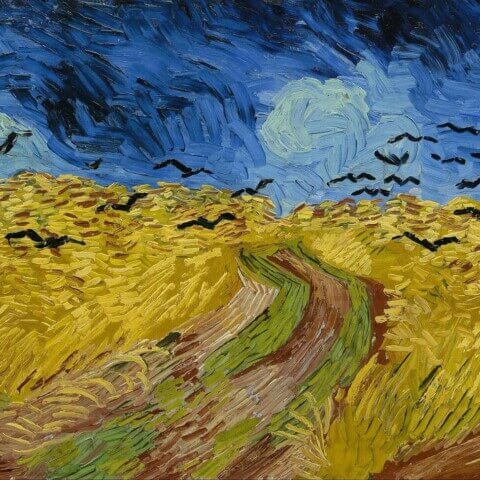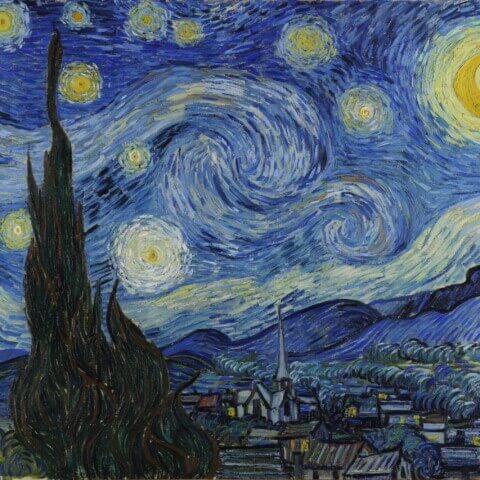“Olive Trees” is a series of paintings by Vincent van Gogh which were created during his time in the Saint-Paul Asylum, Saint-Rémy, between June 1889 and December 1889. One of the most well-known pieces from this series is often simply referred to as “Olive Trees.” Like much of van Gogh’s work, it is renowned for its expressive, emotionally evocative style and the artist’s masterful use of color.
The painting, like many of van Gogh’s works, belongs to the Post-Impressionism style. This movement is characterized by its reaction against the naturalism of the Impressionists, instead emphasizing emotional content, symbolic depth, and a return to structure, while still valuing the Impressionists’ emphasis on the effects of light and color.
In “Olive Trees,” van Gogh’s use of bright, almost unreal colors and swirling brush strokes create a powerful, turbulent scene. The sky is a vibrant, almost electric blue, and the olive trees are rendered in a wild mix of green, yellow, and white, creating a sense of movement and vitality. The brushwork is bold and free, with the paint applied in thick, dramatic strokes, lending the scene a sense of urgency and emotional intensity. This use of color and brushwork were hallmarks of van Gogh’s style, and they make “Olive Trees” a superb example of his work.
“Olive Trees” is special for a number of reasons. Firstly, it represents a period of immense creative productivity for van Gogh. Despite (or perhaps because of) the emotional and psychological challenges he was facing, van Gogh was incredibly prolific during his time in Saint-Rémy, producing some of his most well-known and admired works.
Secondly, “Olive Trees” is a powerful example of van Gogh’s ability to transform the world around him into a deeply personal, emotionally expressive vision. The landscape he paints isn’t a realistic depiction of the view he saw, but rather a representation of how he felt about it. This ability to convey emotion and personal experience through art is part of what makes van Gogh’s work so unique and influential.
Lastly, “Olive Trees” is notable for its potential symbolic meaning. Olive trees are often seen as symbols of peace, hope, and resilience, and given van Gogh’s personal struggles, it’s possible to interpret the painting as an expression of these themes. However, the beauty of van Gogh’s work is that it invites the viewer to draw their own interpretations and emotional responses, making “Olive Trees” not just a great painting, but also a deeply personal experience.
At our art gallery, we take pride in offering comprehensive global shipping to our esteemed clientele. We understand the significance of your art acquisitions and the need to transport them with utmost care. Hence, we are committed to delivering your chosen paintings to any address worldwide and free of any additional charge.
Our reliable courier service partners are experienced in handling precious art pieces and ensure that your painting reaches you in pristine condition. We offer fully insured, door-to-door delivery, providing you with peace of mind that your artwork is protected during transit.
Moreover, to accommodate your unique framing preferences, we offer the distinctive service of sending your purchased artwork directly to any framer across the globe. This enables you to have your painting framed locally by your trusted framer, reducing the risk of damage during transportation.
Regardless of your location or your framer’s, we strive to make the process as seamless as possible. It is our goal to provide exceptional service that caters to your needs and ensures the safe delivery of your valuable artwork.
We invite you to experience our hassle-free, worldwide shipping service, which is aimed at delivering your prized art pieces safely and efficiently, wherever you may be.
Similar paintings
Join our newsletter
Signup for our newsletter and receive our inspiration guide and 20% discount on your first order!

